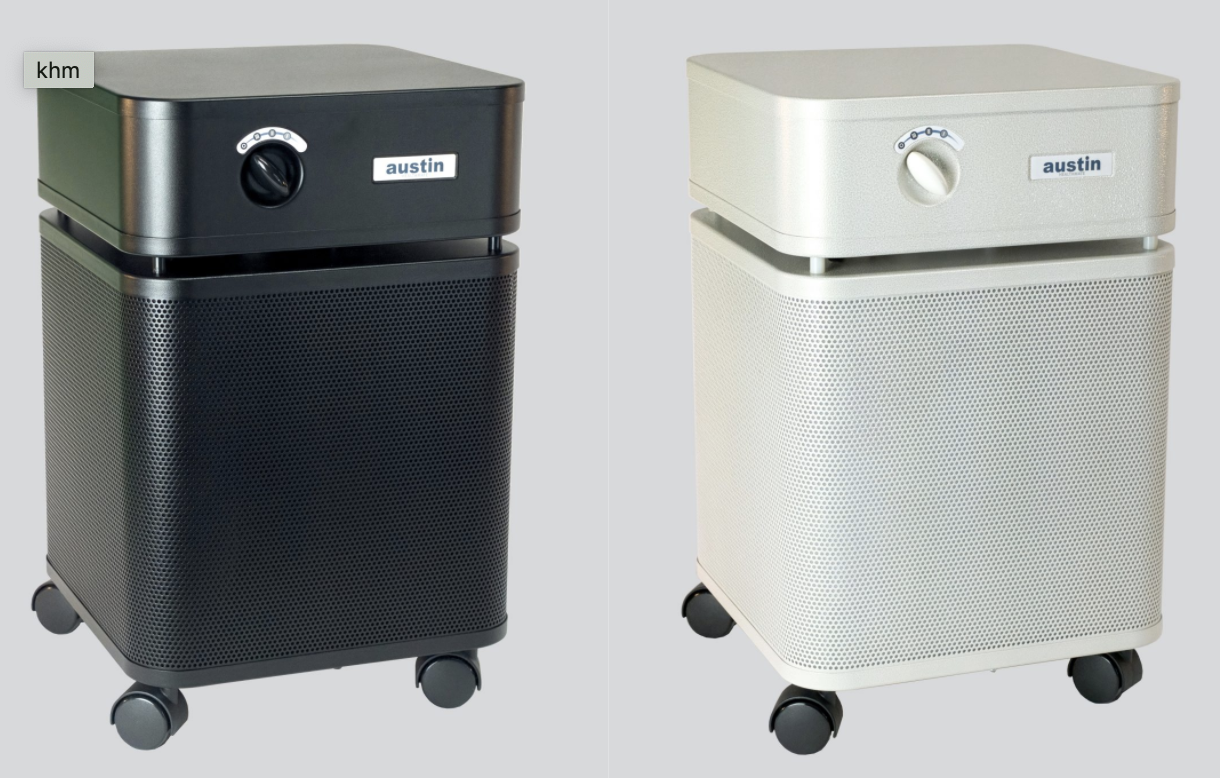Why I recommend Austin Air Purifiers
Clean air is the most important factor in our health
When we think about health, we tend to dive straight into nutrition, forgetting the most fundamental way to restore health is simply breathing clean air. Even with gut health, often inhaled chemical and pathogenic toxins (e.g. mycotoxins) are the ones negatively affecting our gut microbiome.
Nowadays, clean air is a luxury. According to the Environmental Protection Agency (EPA) study, the average American spends 93 % of their life indoors, 87% of their life inside buildings, then another 6% of their life in automobiles. Furthermore, ‘concentrations of some pollutants are often two to five times higher than typical outdoor concentrations.’
Pollutants include:
Building materials
Furniture
Particulate Matter
Cleaning supplies
VOC s(Volatile Organic Compounds)
Biological contaminants such as bacteria, molds, mildew, viruses, animal dander
Combustion products such as Carbon Monoxide, nitrogen dioxide
Outdoor pollution, depending on your region, industrial pollution, smoke from wildfires, or simply your neighbor’s activities: dryer sheets or scented candles.
Basically, when we look around, air pollution is everywhere. When it comes to safety regulation, there’s little to none on studying long term synergistic effects of all these different types of pollutants. Any toxicity testing that is done typically involves individual compounds in highly controlled settings and almost never investigates the effects of complex mixtures. For example, cigarette smoking increases 10X risk of lung cancer whereas asbestos exposure 5X the risk of lung cancer. The total synergistic effect of smoking + asbestos is 55X the risk of lung cancer. That is more than additive or multiplicative.
According to World Health Organization data, all these indoor emissions lead to more than 4 million premature global deaths a year. Especially those living and working inside inadequately ventilated buildings can experience “sick building syndrome.”
While we try to heal our Mother Earth, so we can breathe her abundantly diverse microbiome, we must ensure that our indoor air quality is as toxic-free as possible. Just as the first step to detox is always removing the source, we need to begin with remediation, whether it’s the old carpet or mold. I also recommend creating a minimalistic home environment having only the belongings that either have functions or ‘spark joy.’ Don’t allow your home to be a storage. Fewer items mean fewer toxins. Then, invite nature to your home to purify the air. You can start with low-maintenance plants such aloe vera, English ivy, snake, and spider plants.
Now, it’s time to invest in the ‘right’ air purifier. With so many options, I know this can be a daunting task. After 3 years of researching, testing, and interviewing environmental health experts, I choose Austin Air as my favorite choice.
Austin Air is the ONLY clinically proven medical-grade purifier.
I want to emphasize that Austin Air had no involvement with the independent clinical trials. So the results are non-biased. The trials were done by leading university hospitals and the government where Austin Air outperformed over 100 other air purifiers.
Austin Air is the ONLY air purifier with a 5-year filter life.
While some air purifiers may use medical-grade HEPA, none of them use 60 sq. ft. of True Medical Grade HEPA. Many consumers fall for heavily discounted strategies later finding out how costly maintenance can be. For example, let’s use Airdoctor to do the math. They suggest changing the filter every 6 months which costs $69. This means with Airdoctor you will spend $69 x 10 = $690 in 5 years (if it will even last that long). Whereas with Austin’s most popular option, HealthMate’s filter, you will spend $290. Also, Air Doctor uses potassium permanganate as part of their filtration which is a no-no.
Austin Air is the ONLY air purifier that uses 780 cubic inches of Activated Carbon.
Austin Air is the ONLY air purifier constructed using solid steel and non-toxic powder-coated paint. The majority of air purifiers are made with plastics which can continue off-gas and polystyrene (i.e. Styrofoam) filtration.
Austin Air is one of the air purifiers that emit the lowest EMF. Please read this article to learn why some air purifiers can do more harm than good, especially electronic ones. Often they come with sleek designs, cool accessories, but often there are numerous hidden dangers such as ionizing, UV light, ozone generator, and EMFs.
Austin Air does not participate in lucrative marketing, instead, lets the quality speaks volumes. During this unprecedented time of the pandemic, changing policies, natural disasters, many schools, hospitals, businesses, and residents are choosing Austin Air over any other purifiers.
When it comes to choosing an air purifier, it’s important to be vigilant and make sure to consider all aspects of function and quality. Every breath we take acts as a frontliner of our immune system. I see Austin Air like my mom’s old refrigerator. It may not be fancy but well made. It’s over 20 years old, still durable with well regulated temperature and humidity, never caused any problems. Whereas our beautiful french door stainless steel refrigerator has already caused numerous problems including mold. It is worth it to choose quality over bells and whistles. I believe Austin is a wonderful long term investment in taking control of our health and living our maximum potential!
If you are interested in purchasing one, please click here to further learn which model is right for you.
Resources:
https://www.ncbi.nlm.nih.gov/pmc/articles/PMC7215772/
https://www.epa.gov/sites/default/files/2014-08/documents/sick_building_factsheet.pdf
https://nj.gov/health/eoh/rtkweb/documents/fs/1578.pdf
https://www.nature.com/articles/7500165
https://news.bloomberglaw.com/environment-and-energy/indoor-air-pollution-remains-a-deadly-and-unregulated-problem
https://www.who.int/news-room/fact-sheets/detail/household-air-pollution-and-health
